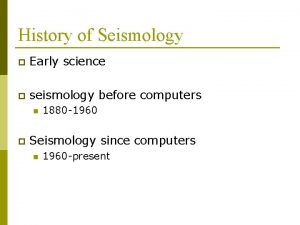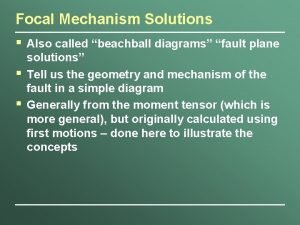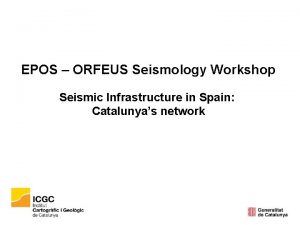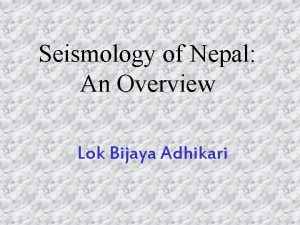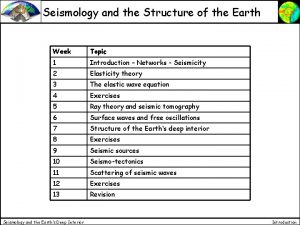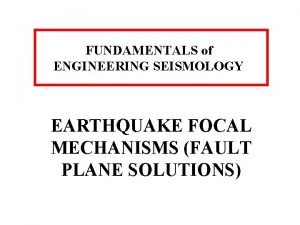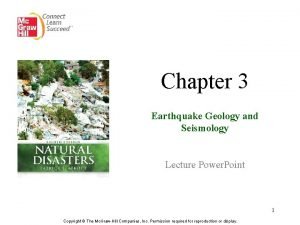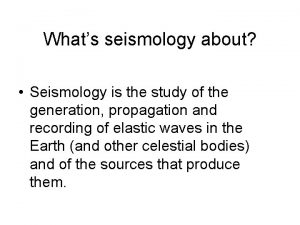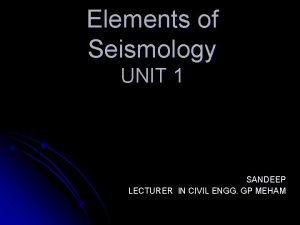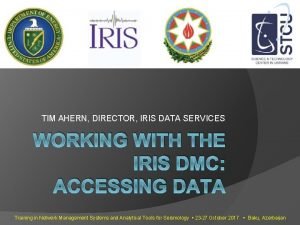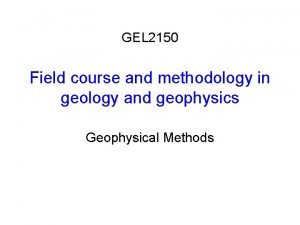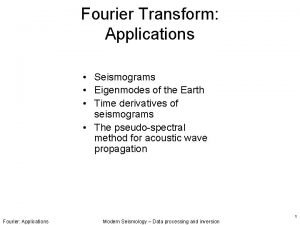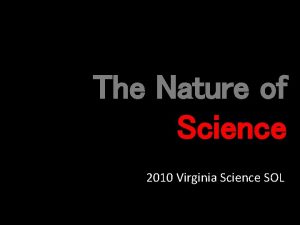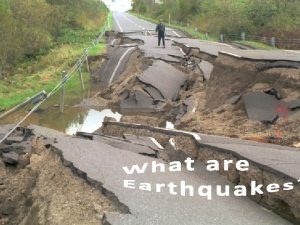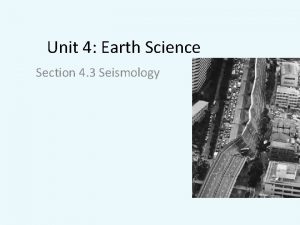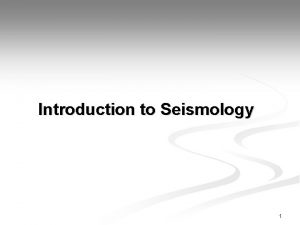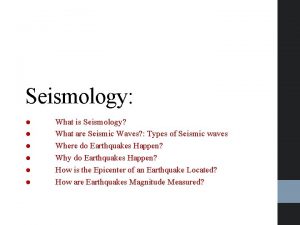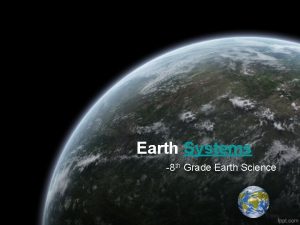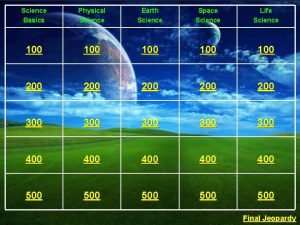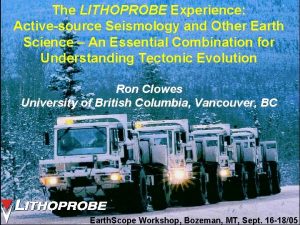Unit 4 Earth Science Section 4 3 Seismology

















- Slides: 17

Unit 4: Earth Science Section 4. 3 Seismology

4. 3 Seismology – The Study of Earthquakes • An earthquake is a shaking of the ground as the result of a sudden release of energy in Earth’s crust Focus – the location where there is the energy is released, below the surface of the earth. Epicentre – point on the surface that is directly above the focus.

• Earthquakes occur at various depths, depending on the plates involved. • Earthquakes near the surface tend to cause more damage.

I. Causes of Earthquakes • Rock masses on either side of a fault are pushing past one another. • Rock masses bend and compress until there is enough stored energy to overcome friction between the rock masses; • this energy is then quickly released as kinetic energy during an earthquake – Elastic Rebound Theory.

II. Earthquake Waves • P Waves – primary wave • S Waves – secondary wave • Love Waves – surface wave

Primary waves (P waves) • pressure wave; • particles move in the same direction as the wave. • Almost twice as fast as S waves. • Travel through solids and liquids (crust, mantle and core)

Secondary waves ( S wave) • transverse wave; • particles move perpendicular to the direction of the wave. • Travel slower than P waves. • Travel only through solids (lithosphere)

Surface waves (Love waves): • ground motion is a rolling action, like ripples on a pond. • Travels along surface of the Earth. • Slowest and last waves to arrive after an earthquake • Usually cause the most structural damage

III. Locating an Earthquake The seismometer • Instrument used to measure the ground motion resulting from earthquakes • Produces a zigzag tracing on a paper by a pen • Tracing is called a seismogram

Determining the Distance to the Epicentre • P waves are faster than S waves; therefore, P waves arrive at a seismograph station before the S waves. • The time interval between the arrival of P and S waves at a seismograph is used to determine the distance to epicenter. • Time-distance graph is used as a tool to calculate distance to epicenter

Locating the Epicentre • Need THREE different locations using the time -distance graph to calculate the epicenter. • Draw a circle around each seismograph with a radius equal to the distance to the epicenter. • The location where three circles meet is the epicenter.

• Depth to the focus is found by the lag time of the L wave – the longer the lag time, the deeper the focus.

IV. Measuring an Earthquake – Earthquake Magnitude • The Richter Scale is a standardized scale of earthquake magnitude (amount of shaking) • Each point represents vibrations that are 10 times greater than the point below it. • Each tenfold increase in vibrations means 30 times more energy released.

V. Earthquake Hazards 1. Ground shaking • The result of the waves set in motion by the earthquake • Some vibrations move up and down while others move side to side • Most buildings can withstand large up-anddown vibrations, but not side-to-side (cause collapse)

2. Liquifaction • Vibrations cause groundwater to rise, turning solid ground into a liquid-like material. • Buildings built on solid rock experience little damage; buildings located on bog muds or soft fill suffer severe damage

3. Tsunamis • Large ocean waves produced when earthquakes occur under water. • Caused by a large displacement in the water column

VI. Vancouver’s Next “Big Earthquake” • The Juan de Fuca Plate, Explorer Plate, and Gorda Plate are all subducting under the North American Plate • Each of the three plates have transform fault lines • Will most likely be produced by stress and strain generated at a transform fault or along the subduction zone under the North American Plate.
 Seismology timeline
Seismology timeline Normal fault beach ball
Normal fault beach ball Orfeus seismology
Orfeus seismology Seismology nepal
Seismology nepal Seismology
Seismology Beach ball earthquake
Beach ball earthquake Seismology
Seismology Whats seismology
Whats seismology Elements of seismology
Elements of seismology Seismology
Seismology Seismology
Seismology Seismology
Seismology My favorite subject science
My favorite subject science Unit 10, unit 10 review tests, unit 10 general test
Unit 10, unit 10 review tests, unit 10 general test Meteorological symbols for four types of fronts
Meteorological symbols for four types of fronts Earth science sol 2010
Earth science sol 2010 Earth science lab practical review
Earth science lab practical review Earth science regents locating an epicenter
Earth science regents locating an epicenter
